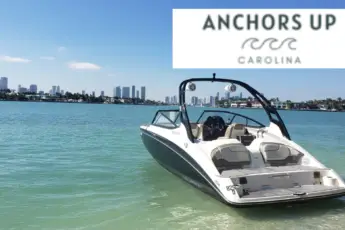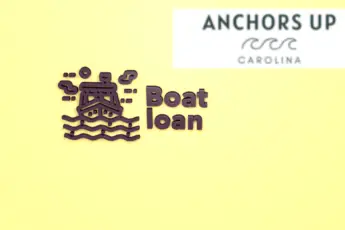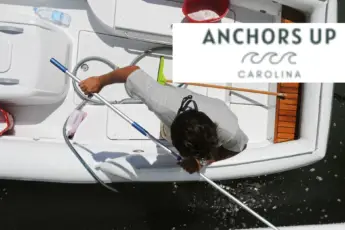One of the most important aspects of boating is knowing how to read and navigate channel markers. As a former captain, I encountered a wide variety of markers and needed to know what to do and when. One of the more common markers on the ocean is a safe water marker. Here is what you need to know about safe water markers.
What Does A Safe Water Marker Look Like
The safe water mark is one of the most easily spotted markers. The combination of the colors, pattern, and nighttime lighting makes it highly visible.
In regards to coloration, the marker alternates with red and white vertical stripes. The stripes vary in width, similar to that of the marker itself.
Shape
Interestingly, the marker comes in a multitude of shapes, including a par, sphere, or pillar. Understand that you will not always be looking for a specific shape to determine that you are in safe water. Keep an eye out for any of these three types.
Lighting
When it comes to lighting during the nighttime hours, a safe water mark displays 1 long flash every 10 seconds.
Remember, you won’t be able to see the colors on the marker itself. With that said, you’ll need to memorize the light flash pattern to determine you’re in safe water.
What Does A Safe Water Mark Look Like On A Chart
In addition to recognizing the marker on the water, it is imperative to identify it on a chart when route planning.
As a captain, I performed extensive route planning when delivering vessels to the Bahamas and the Caribbean.
In addition to safe water marks, I needed to memorize a multitude of markers on charts. So, to recognize a safe water mark on a chart, look for a diamond with a small circle at the bottom and a line connected to a small circle at the top. In most cases, a magenta teardrop will be positioned next to the marking, indicating that it is lit.
Importantly, when creating a course line on a chart, you can plan the route to line you up within a safe proximity to the marker. This applies to entering or departing a port or staying centerline to a channel.
Use these marks to your advantage when lining up with a channel or determining you are returning to safe open waters.
Where To Navigate Near Safe Water Markers
One of the most important things to understand about a safe water mark is that the water in its immediate vicinity is safe for navigation.
With that said, it is important to remain close while keeping a safe distance. I recommend staying within 50 yards. However, this is highly dependent on the location of the marker in addition to traffic.
Furthermore, when passing a safe water mark, it is best to keep it on the port side of the vessel. This allows for boats to pass from port to port, which is standard. Vessels moving in opposite directions will keep the marker on the port side. To be more clear, the marker divides the passing vessels.
Navigating Around Safe Water Markers At Night
During the evening hours, navigating becomes more challenging as a result of the reduced visibility.
First, understand that you should slow your speed once darkness has set in. Secondly, look out for the flashing light pattern. Remember, one long flash will display every ten seconds.
Once you catch a glimpse of the marker, aim the bow in its direction. This is as long as you are remaining within the channel or returning from the open ocean.
When approaching the marker, ensure that you allow enough clearance to pass safely. Remember, not all markers are fixed. However, if they are not fixed in place, they will have a minimal amount of swing.
Lastly, once you pass the marker, you will be either in open waters or entering a marked channel. Remember to stay within the channel markers if you’re headed inland. Lastly, keep an eye out for boats and, in particular, the bow lights.
A Safe Water Marker Is An Important Navigational Resource
Remaining safe while boating is of the utmost importance. For this reason, it is imperative to utilize markings that assist with navigation. As a captain, I came across a multitude of markers, so therefore, I committed them to memory. Fortunately, the safe water mark is easy to recognize especially during the day. Use this specific navigation aide to guide you safely inland or offshore.







